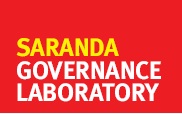 BDO Abu Road Kundan mal Dave says the law mandate 60.40 ratio. i cant do anythng about it
BDO Abu Road Kundan mal Dave says the law mandate 60.40 ratio. i cant do anythng about it  Aamthala sarpanch Soma Ram says he has no other option but to get the sanctions for the same ditch again and again. i have to provide jobs to my pp afterall
Aamthala sarpanch Soma Ram says he has no other option but to get the sanctions for the same ditch again and again. i have to provide jobs to my pp afterall
 Chandela panchayat sarpanch Lakma Ram showing a ditch that has been dug up 4 times at an expense of Rs 40 lakh
Chandela panchayat sarpanch Lakma Ram showing a ditch that has been dug up 4 times at an expense of Rs 40 lakh
 This ditch in Karauli village was dug up only last year.its being dug up again at an expense of Rs 9 lakh-pic IV
This ditch in Karauli village was dug up only last year.its being dug up again at an expense of Rs 9 lakh-pic IV
G
overnment officials in Sirohi district’s Abu Road block may not have heard of Keynesian theory about the government paying millions of unemployed people to dig ditches and then paying them again to fill up the same ditches in order to keep recession out but they are following it with minor variations here. In Sirohi, the officials pay crores to the unemployed to dig the same ditches again and again, and year after year.
In Chandela panchayat, for instance, an irrigation ditch/pond has been dug four times; another one in Amthala panchayat thrice; while a third in Moongthala panchayat has been dug up twice so far. And all this non-durable asset-building, yet unproductive, work is being carried out under the UPA government’s much-touted Mahatma Gandhi national rural employment guarantee scheme (MNREGS).
“The ditch you see has been dug up four times, incurring an expenditure of Rs 40 lakh on it,” admitted Lakma Ram, the sarpanch of Chandela panchayat, pointing at a large pond that remains dry during most of the year.
The story is similar for every panchayat in this block.
Each of the 25 panchayats has five ditches on an average, and an annual allocation of Rs 10 lakh is made to dig (and re-dig) each ditch, as they get covered up every monsoon. With 125 ditches in the entire panchayat, the administration spends a whopping Rs 12.5 crore (125 ditches multiplied by Rs 10 lakh) every year.
And here we are talking about just one of the five blocks in Sirohi district.
So, why this colossal waste of public money on digging ditches, and not on something that lasts and is real asset for a panchayat?
The answer lies in the rules of MNREGS, which say Rs 60 out of every Rs 100 spent on any project has to go toward labour wages. The remaining Rs 40, the rules say, is meant to procure material.
Over to para 9, schedule-I of NREG Act-2005, “The cost of material component of projects including the wages of the skilled and semi-skilled workers taken up under the scheme shall not exceed forty percent. Hence, in the selection of works 60:40 wage-material ratio has to be maintained at gram panchayat level.”
This was done primarily to keep contractors, and machines they would have brought in, out of the labour-intensive scheme.
This ratio rule, though, disqualifies any ‘pucca’ work for the panchayat.
Other Project Sites |
||||||
 Sheragada, Ganjam |
 Noorserai, Nalanda |
 Salboni, West Medinipur |
||||




 Four journalists stay in and report from the heart of rural India in a Governance Now and ANSA-SAR project to study the impact of sustained reportage on implementation of welfare schemes
Four journalists stay in and report from the heart of rural India in a Governance Now and ANSA-SAR project to study the impact of sustained reportage on implementation of welfare schemes












)
